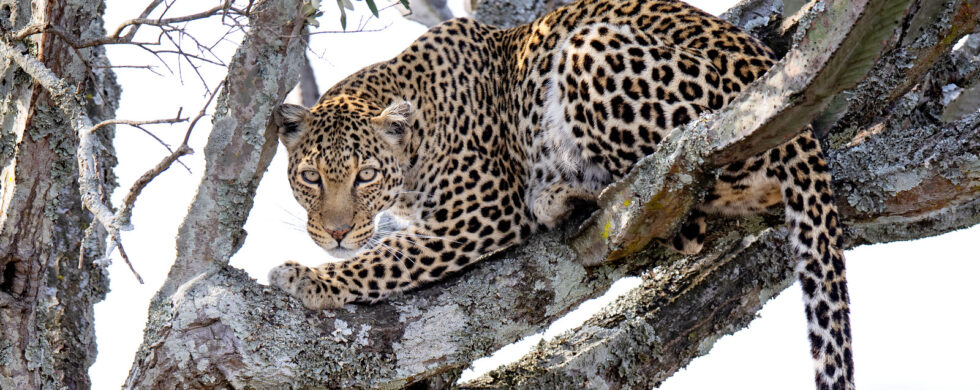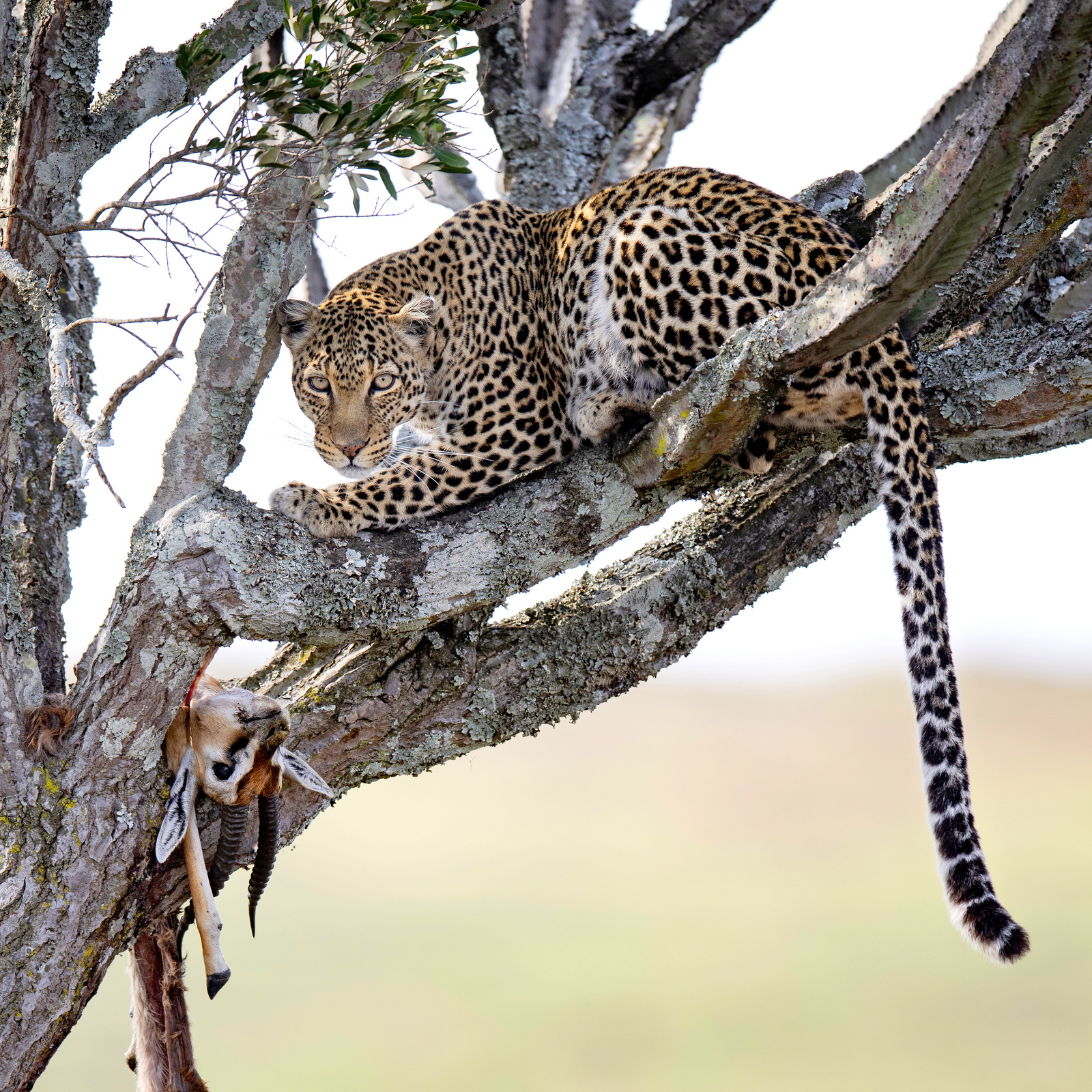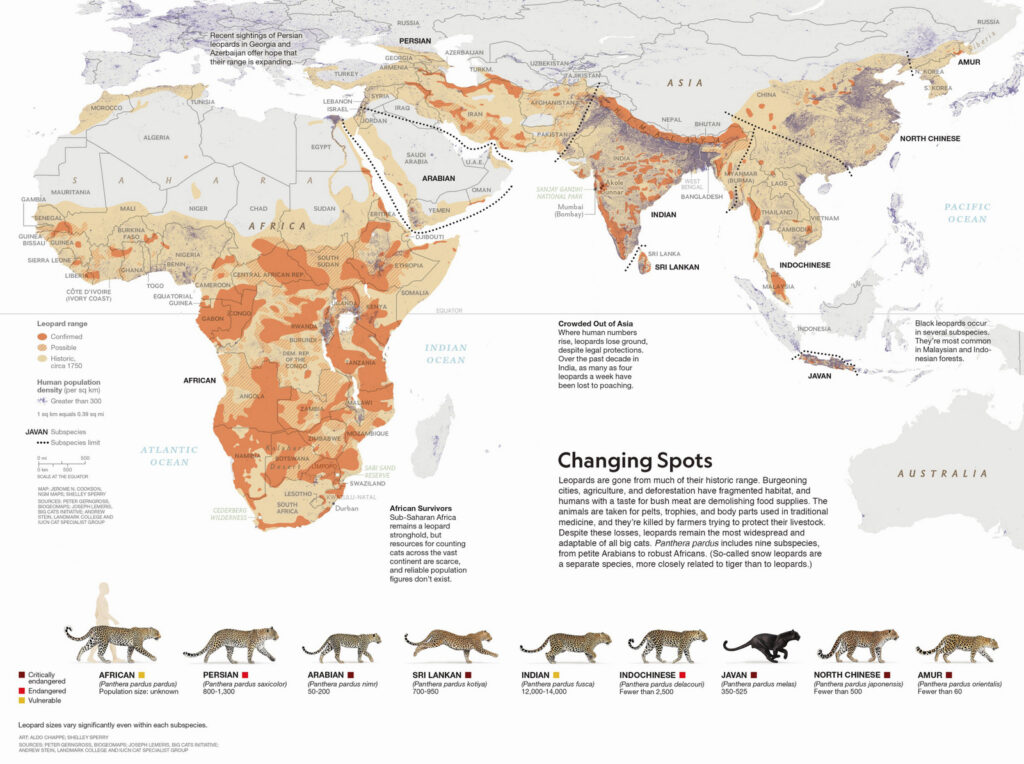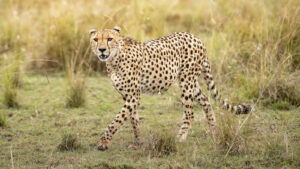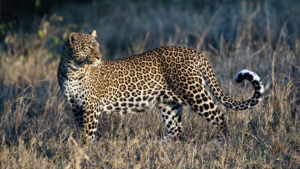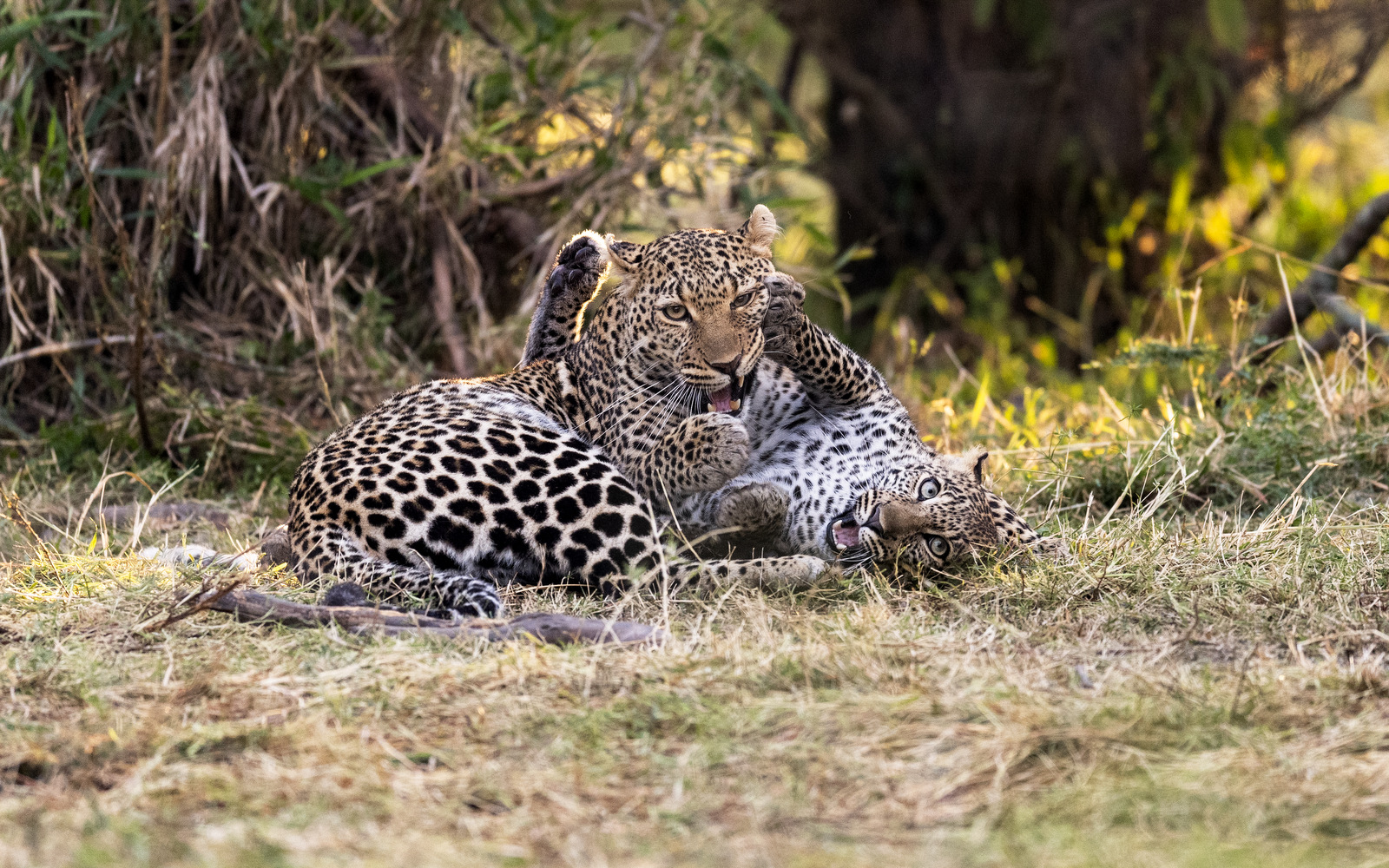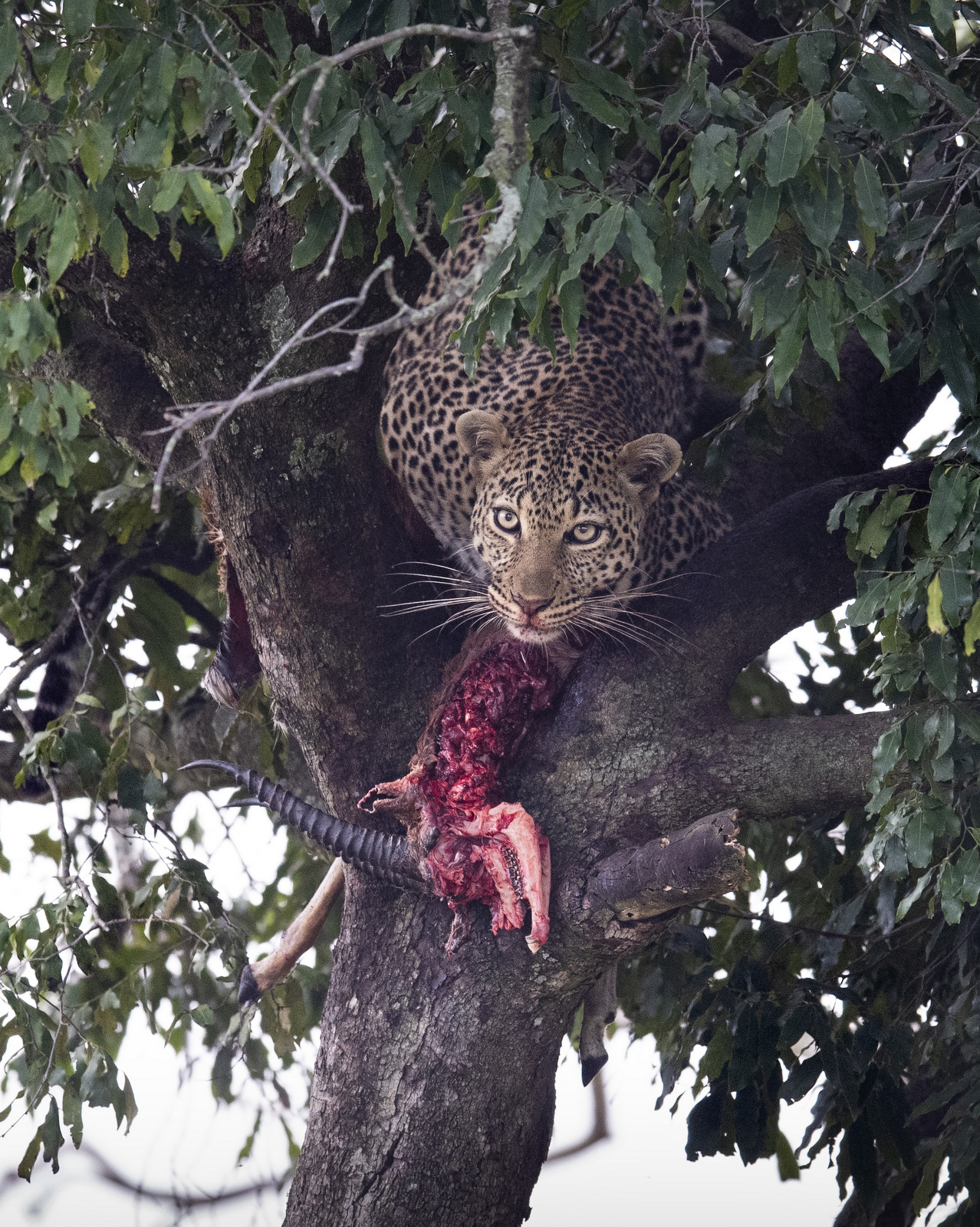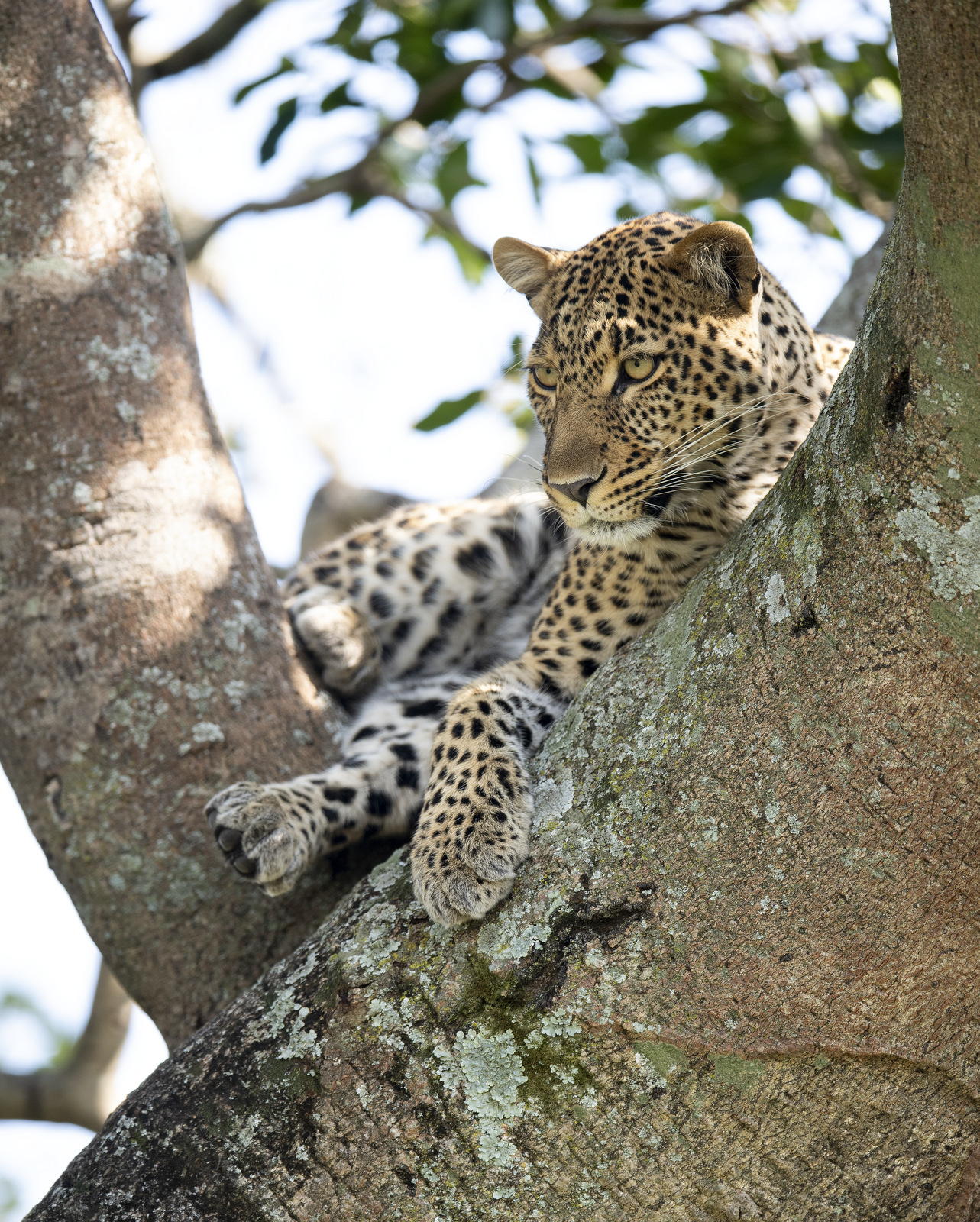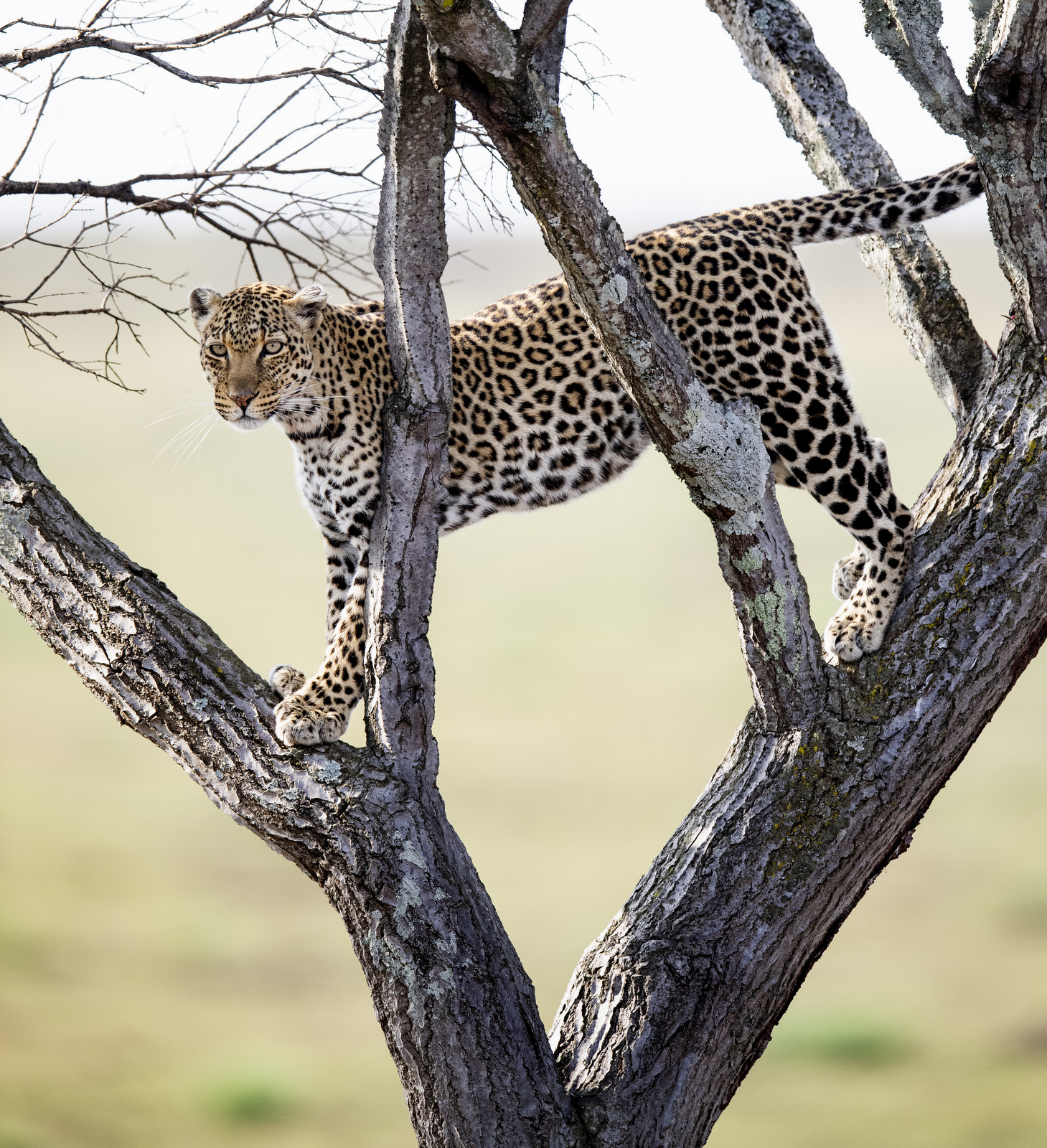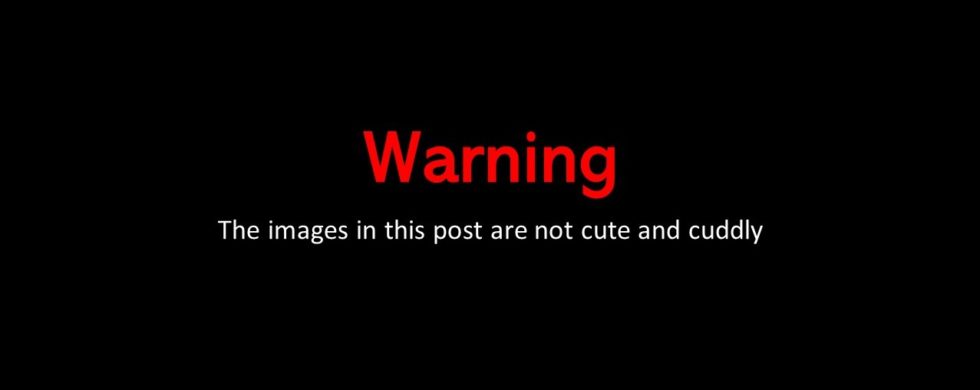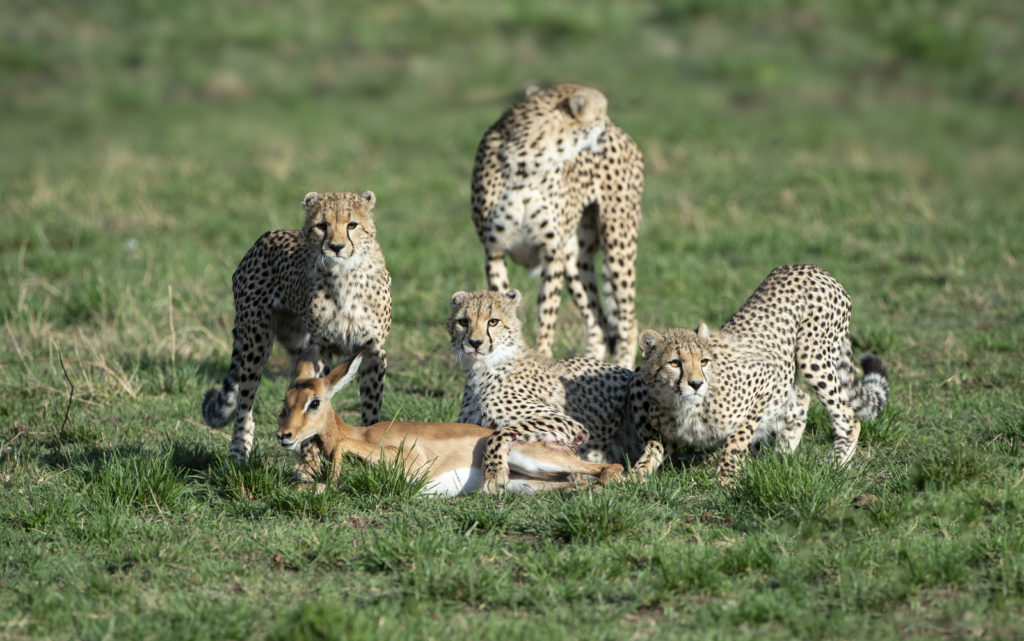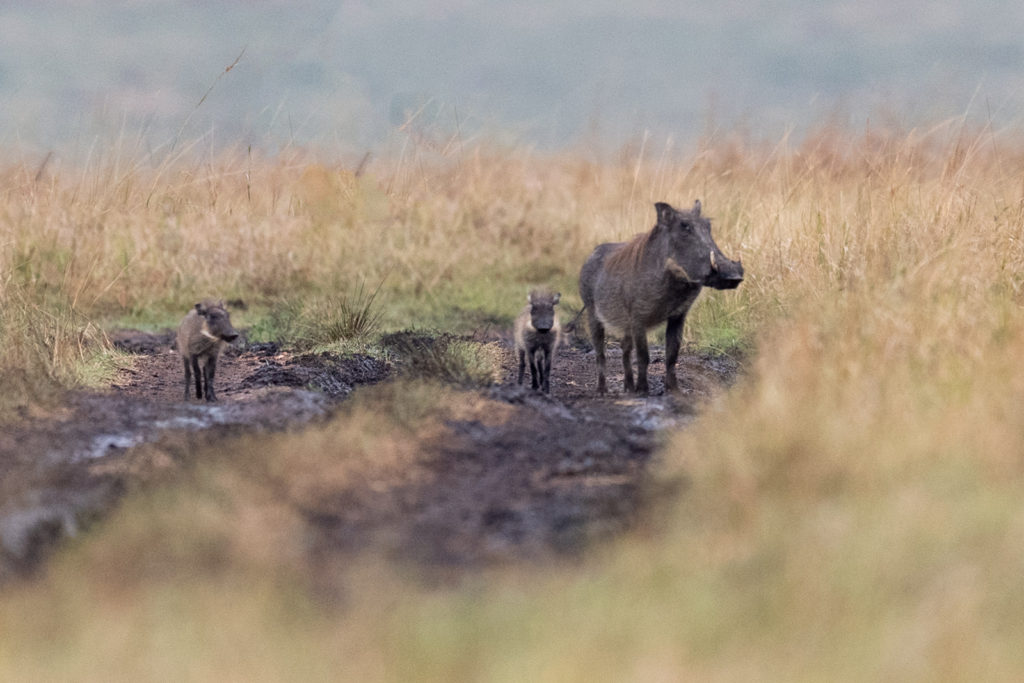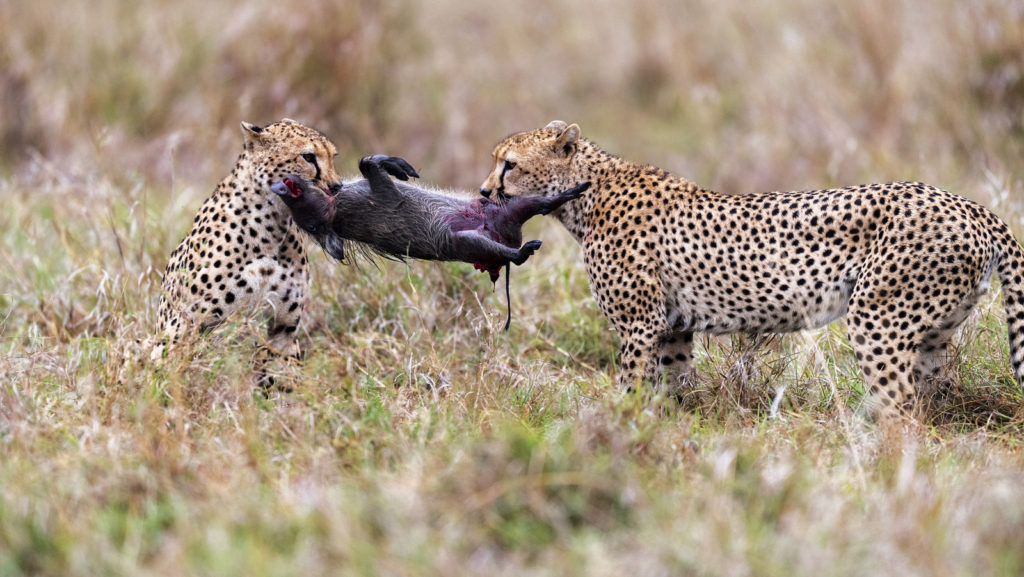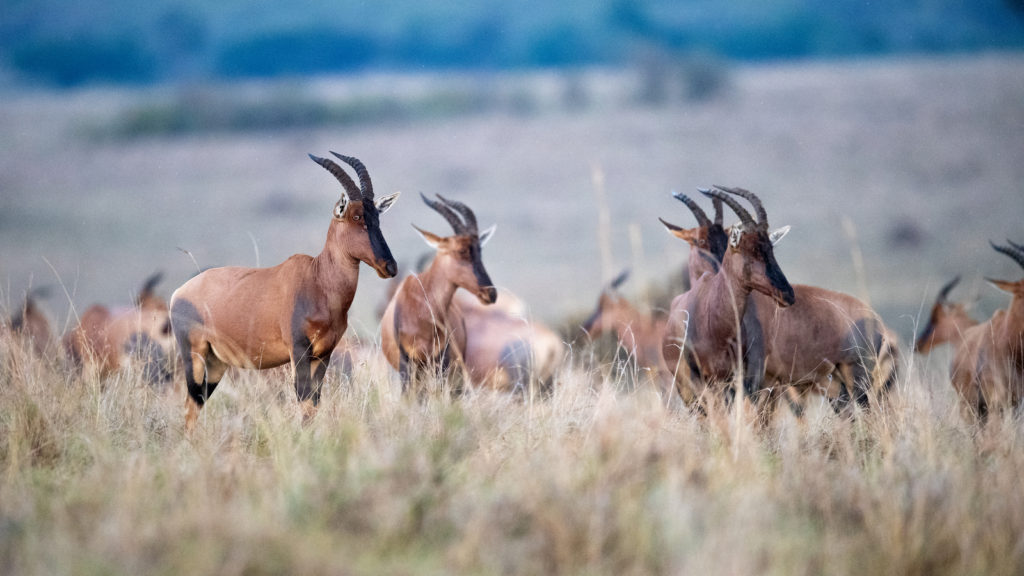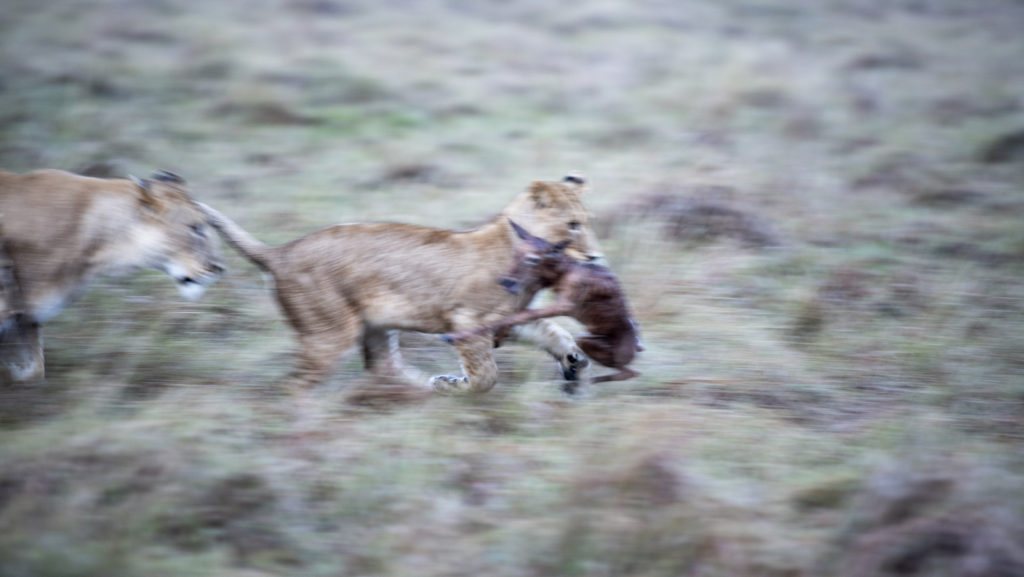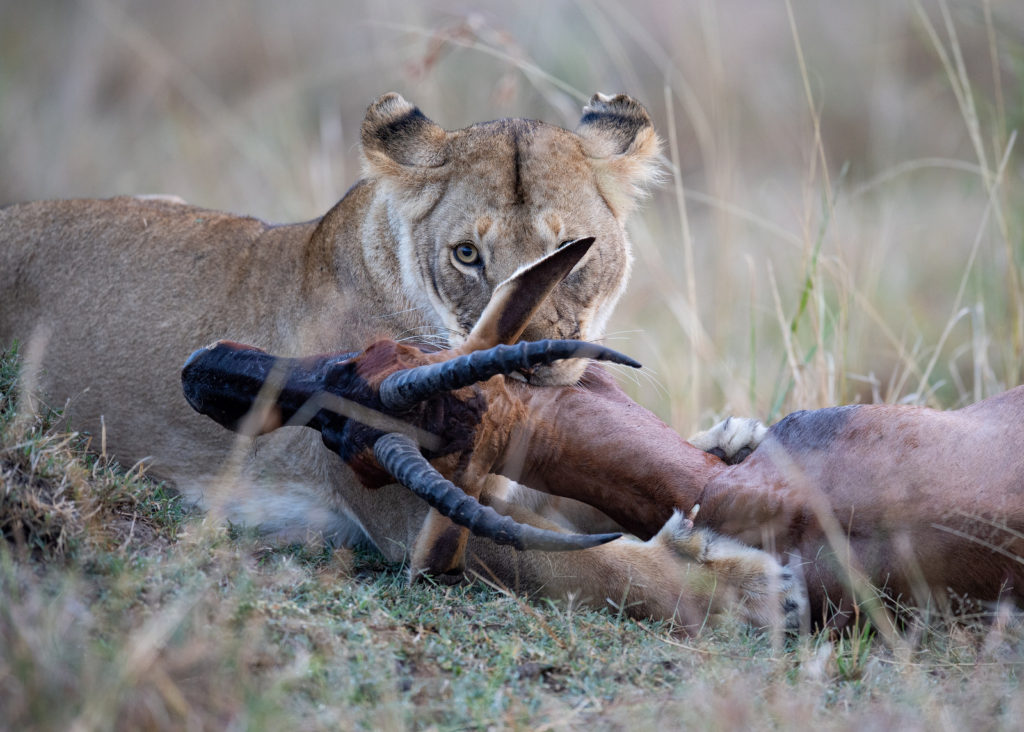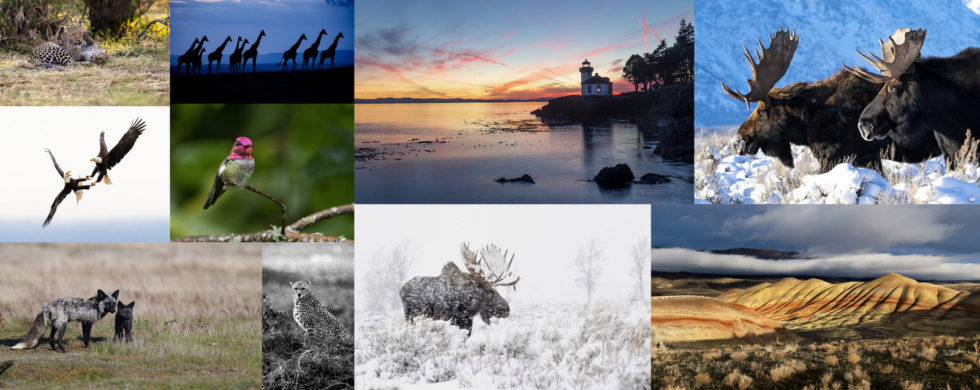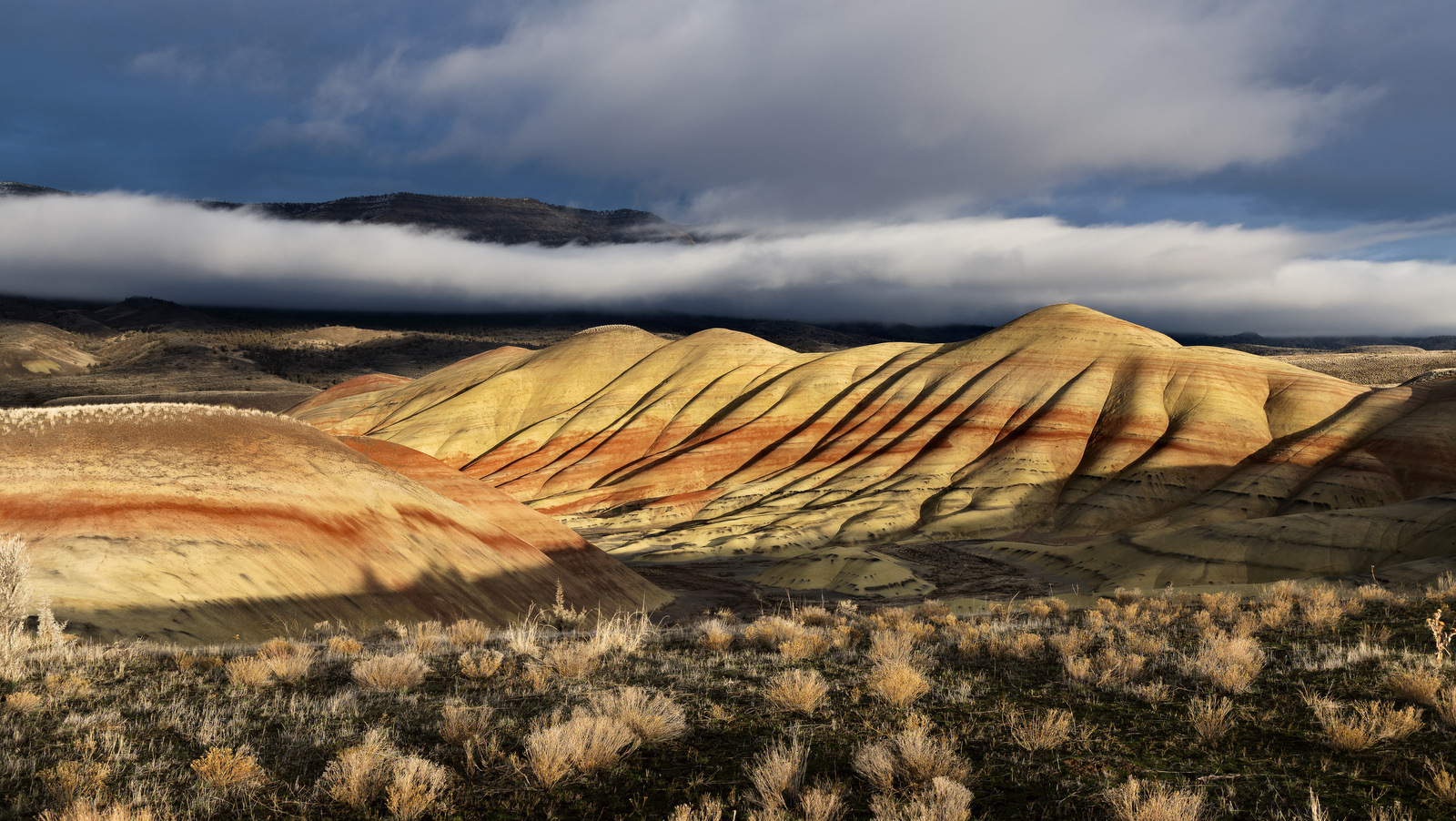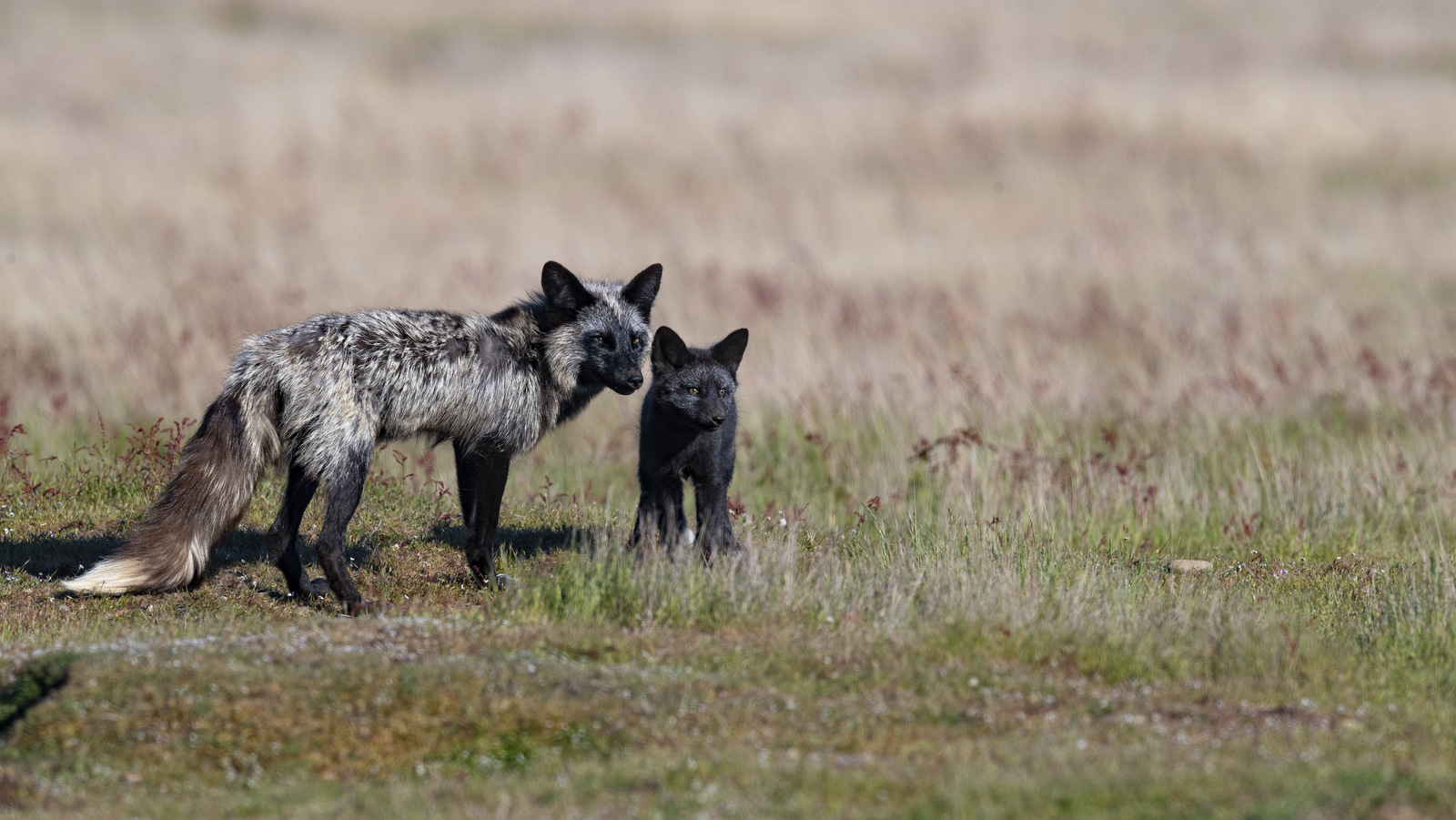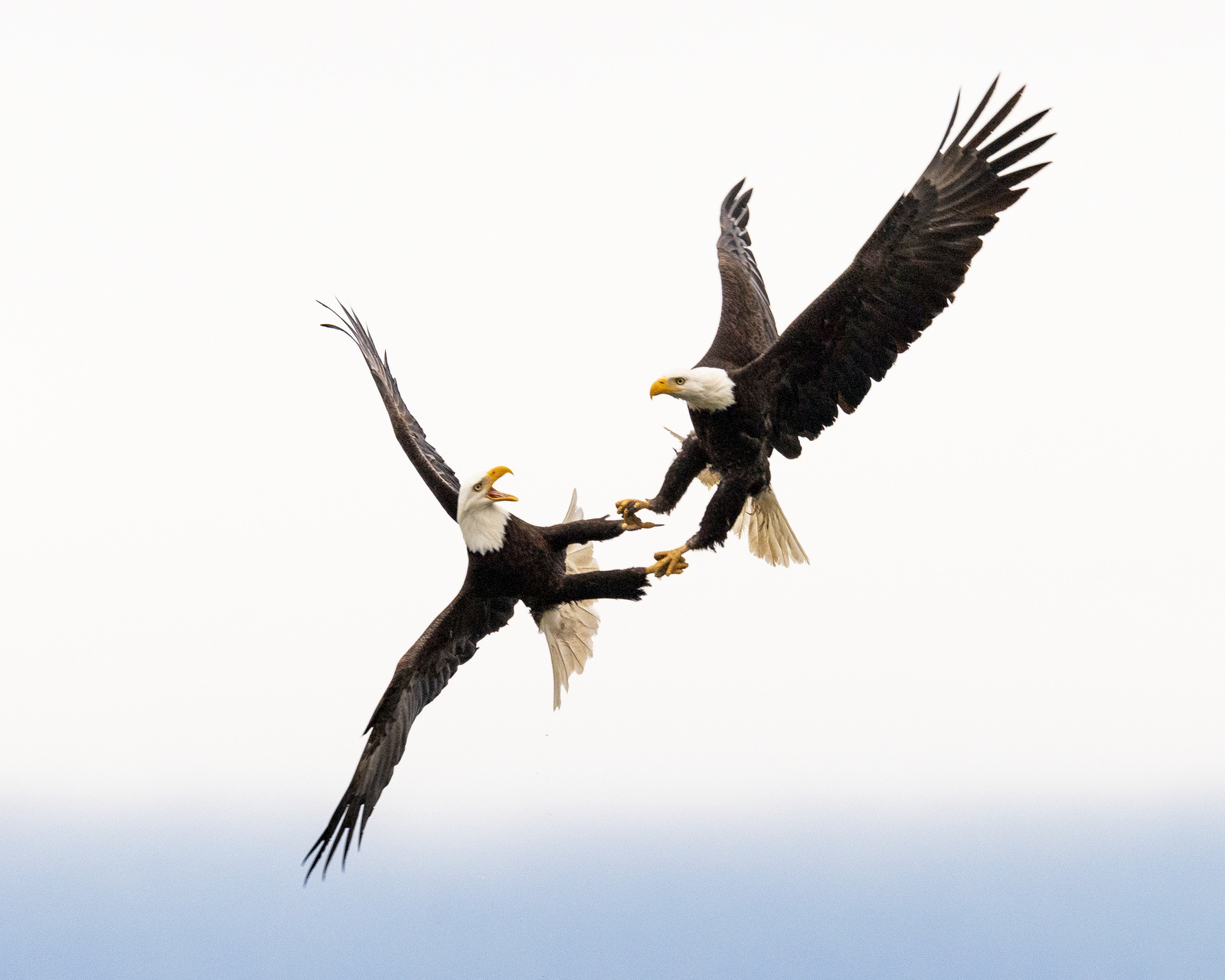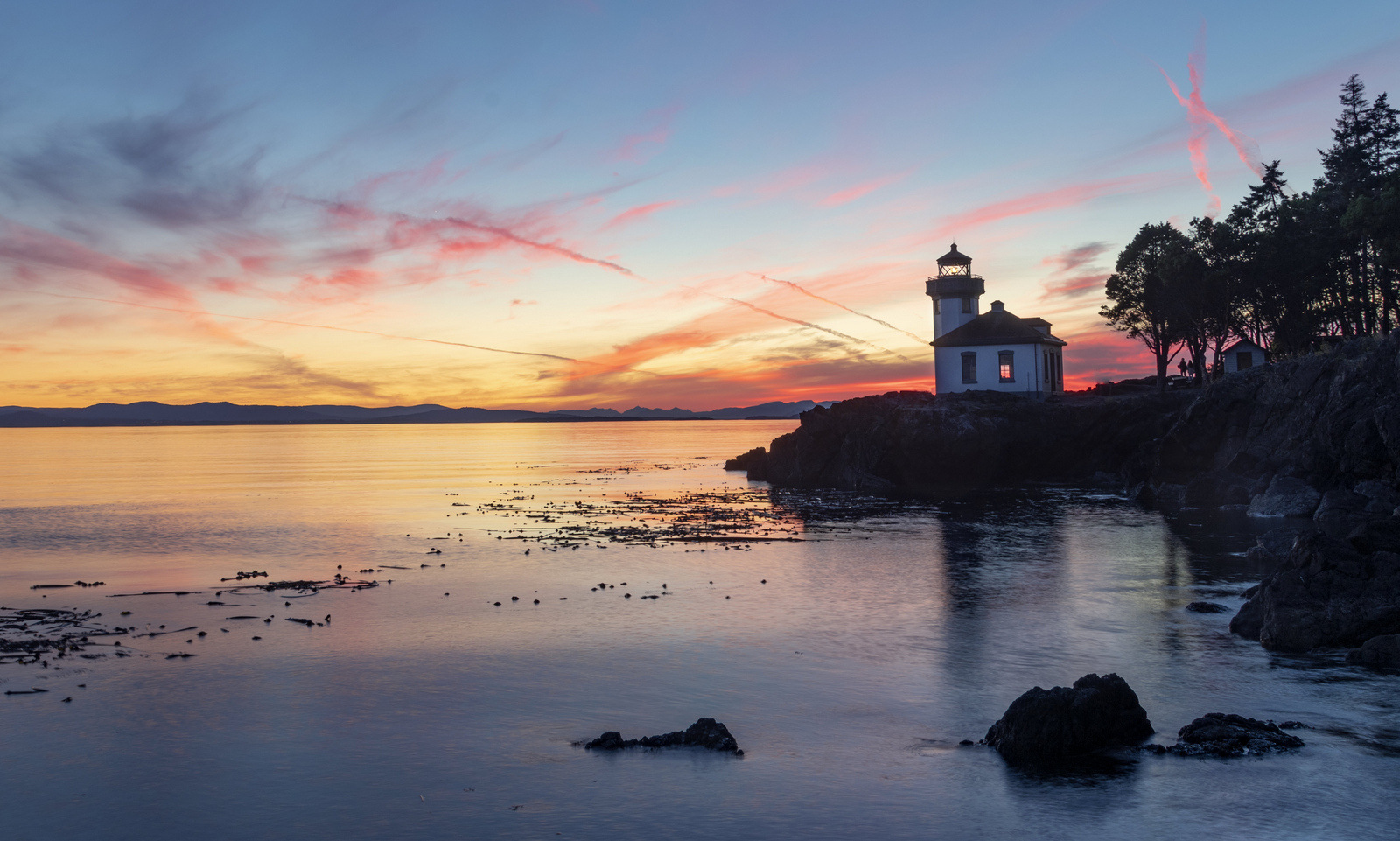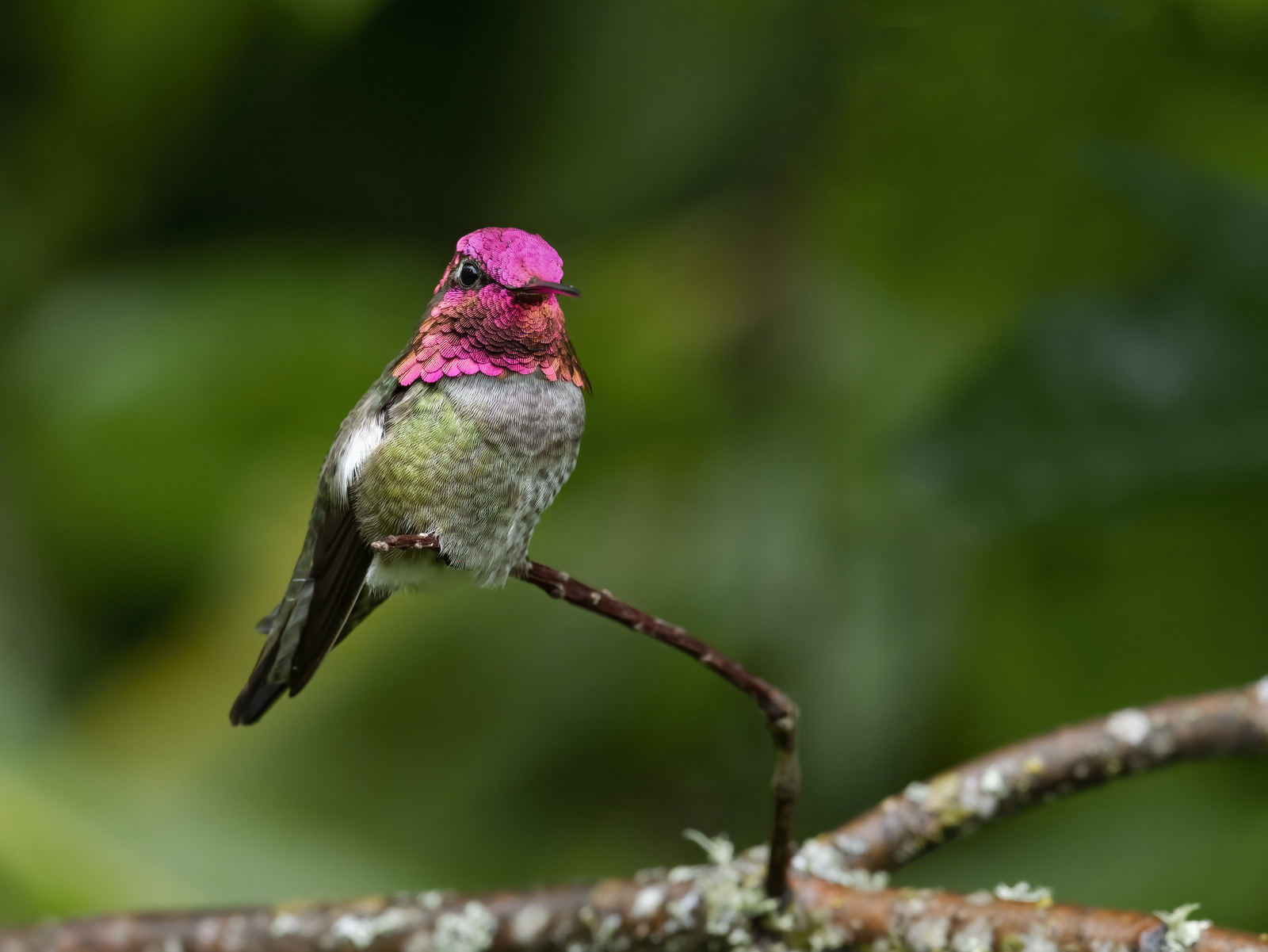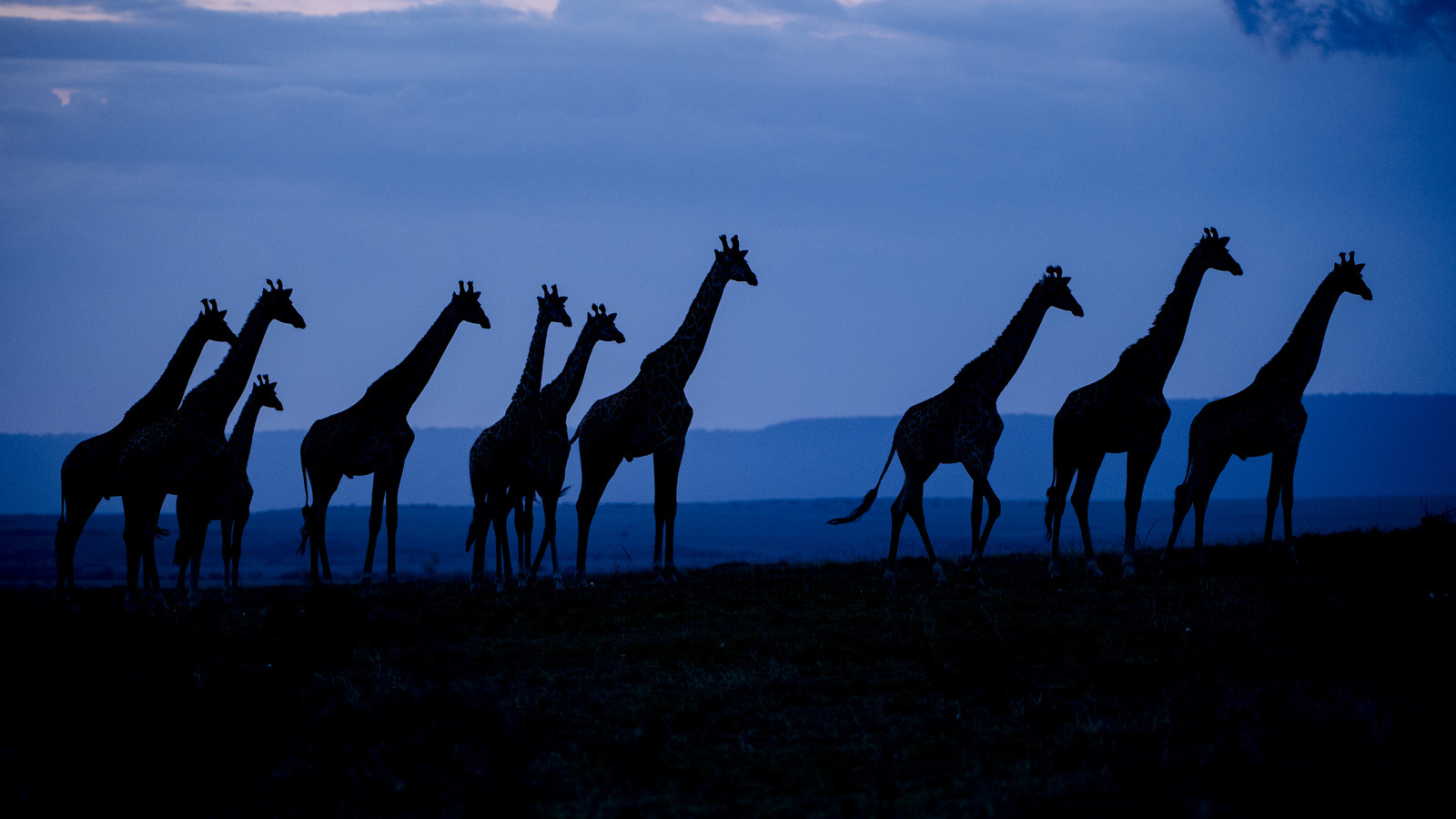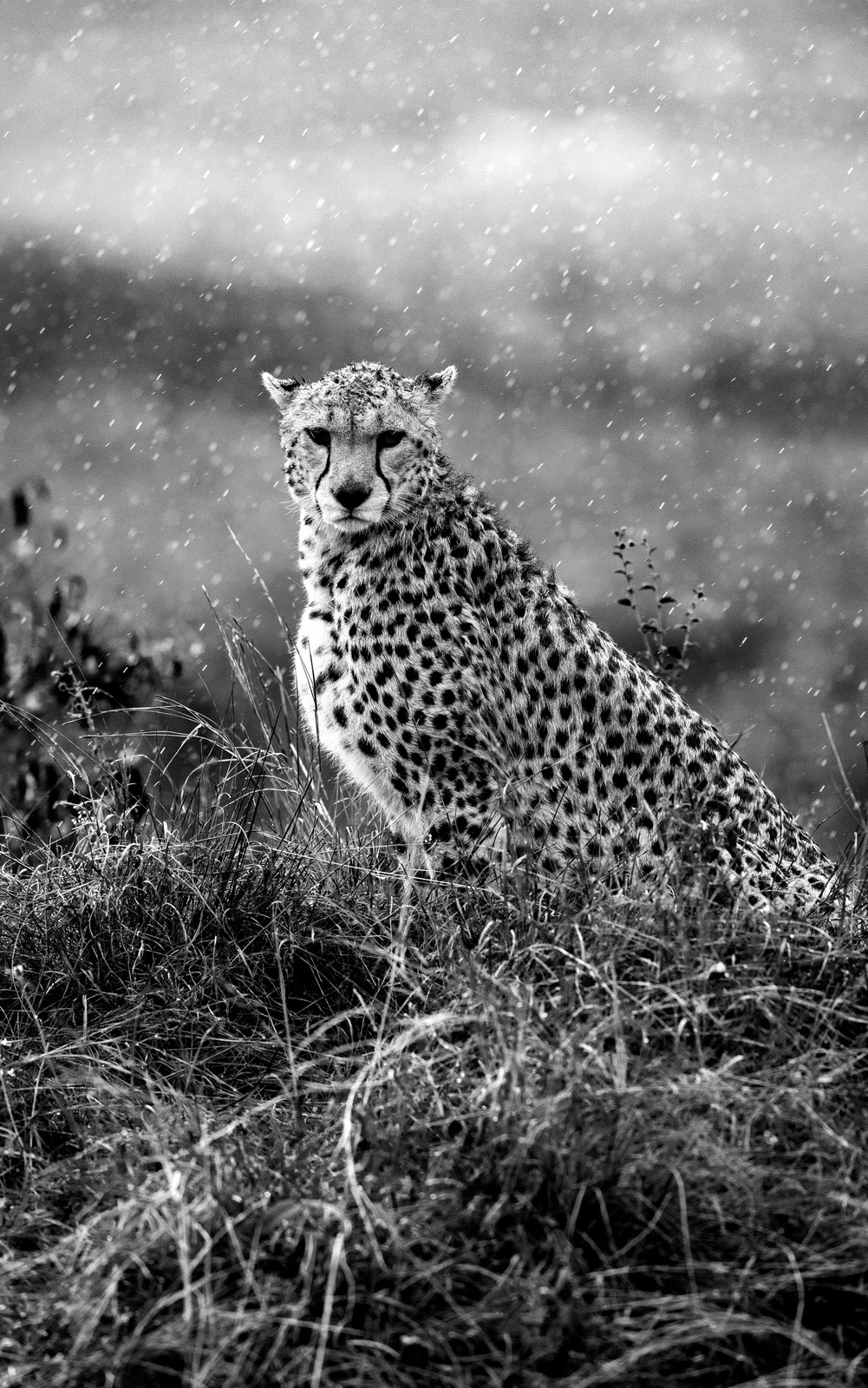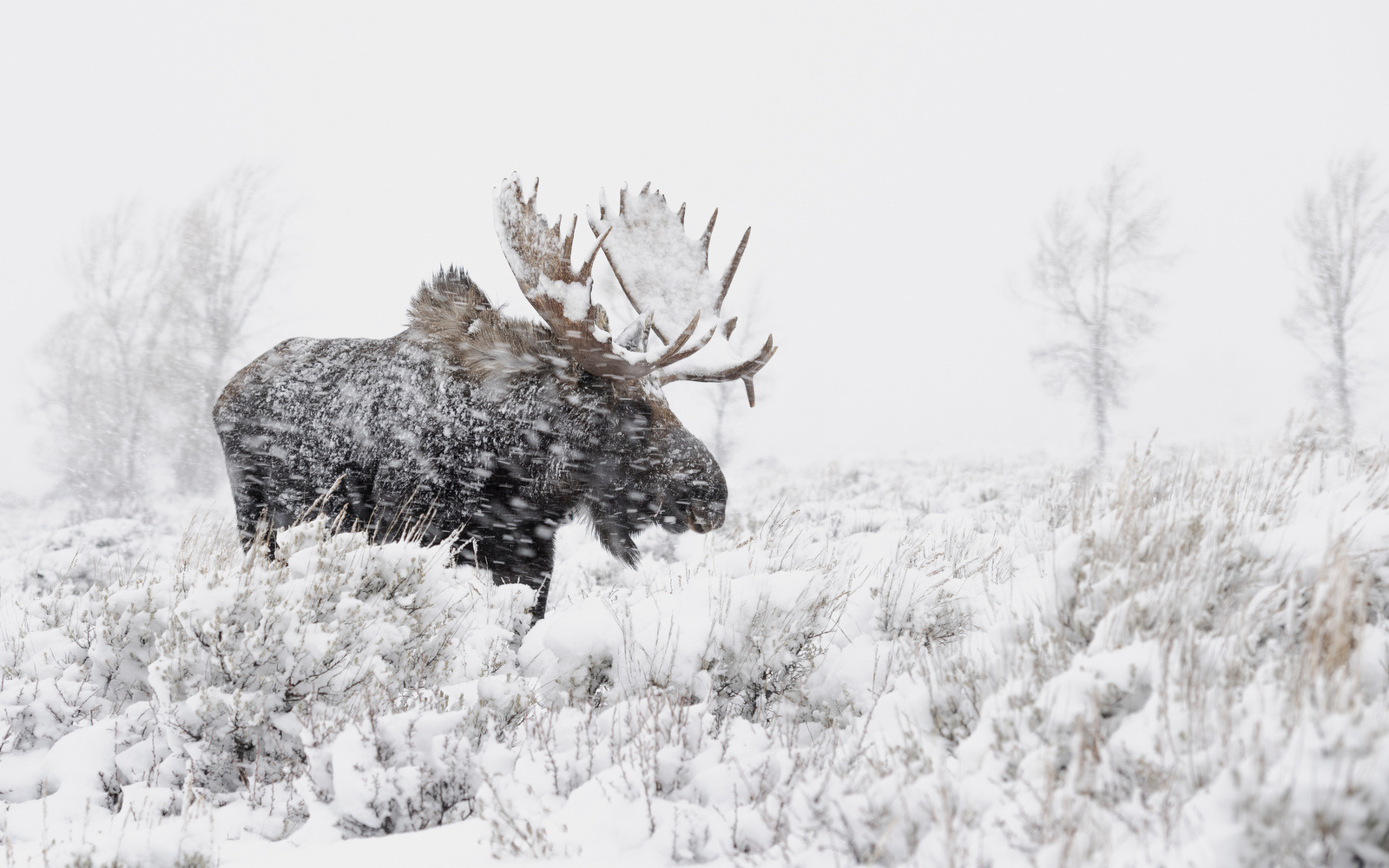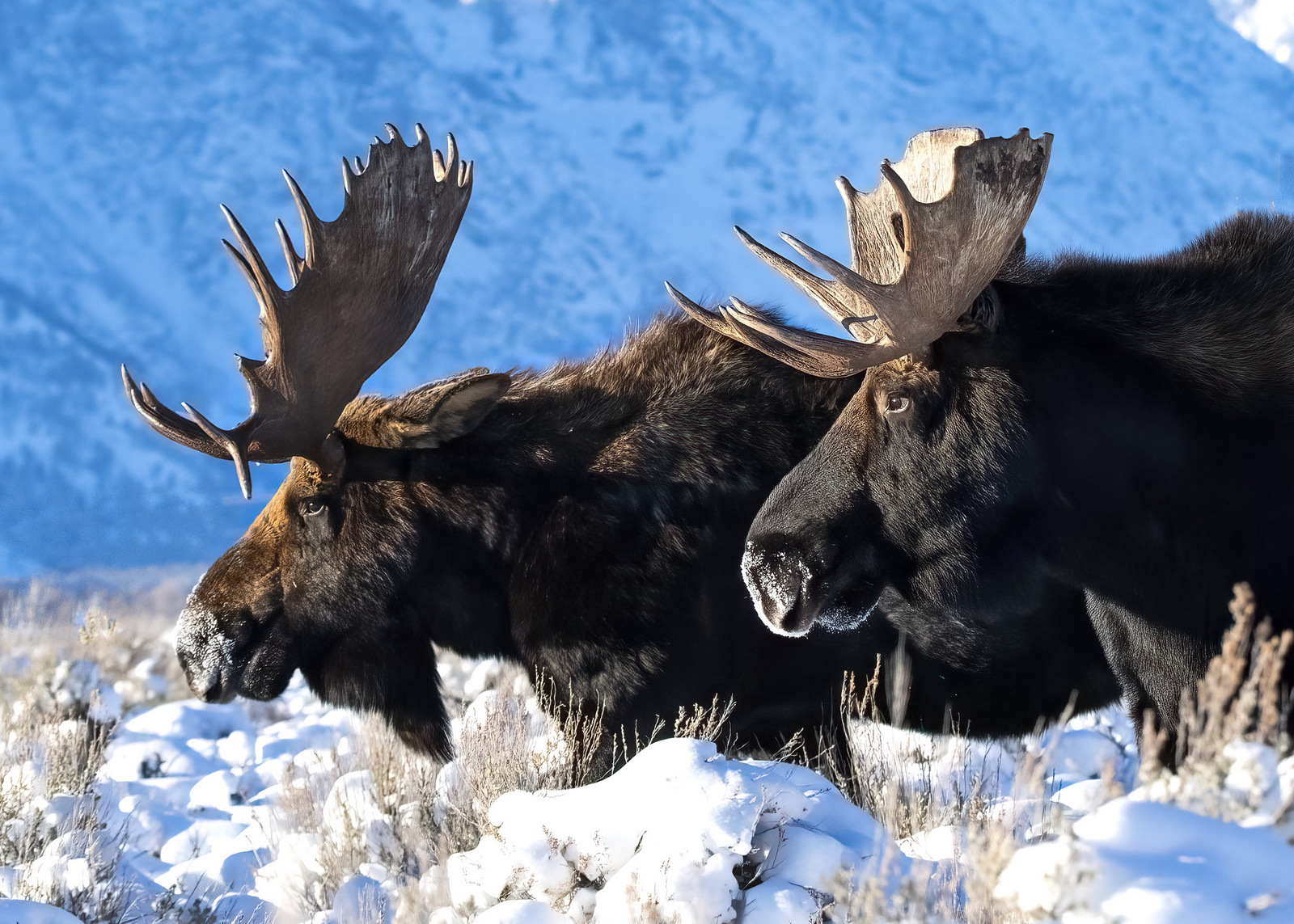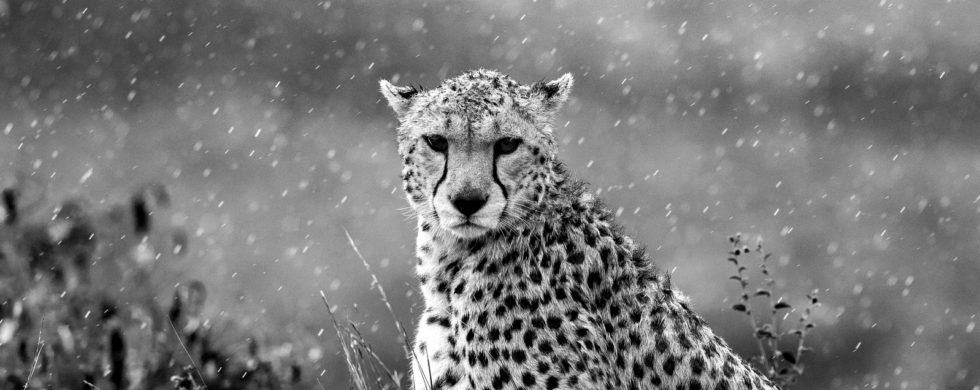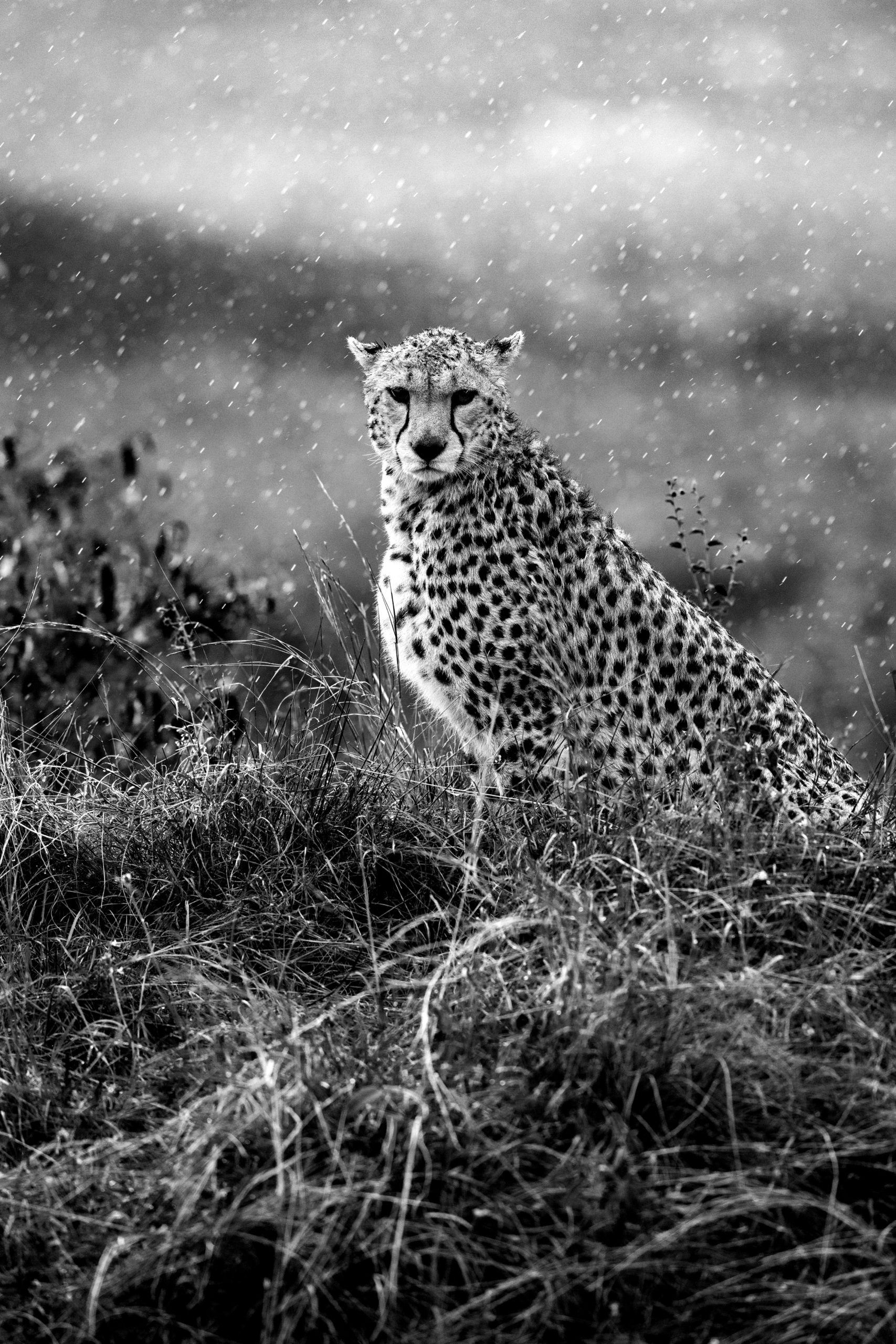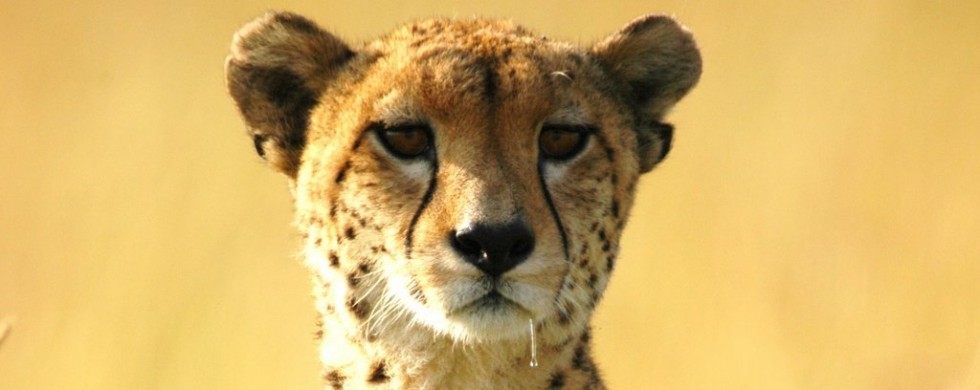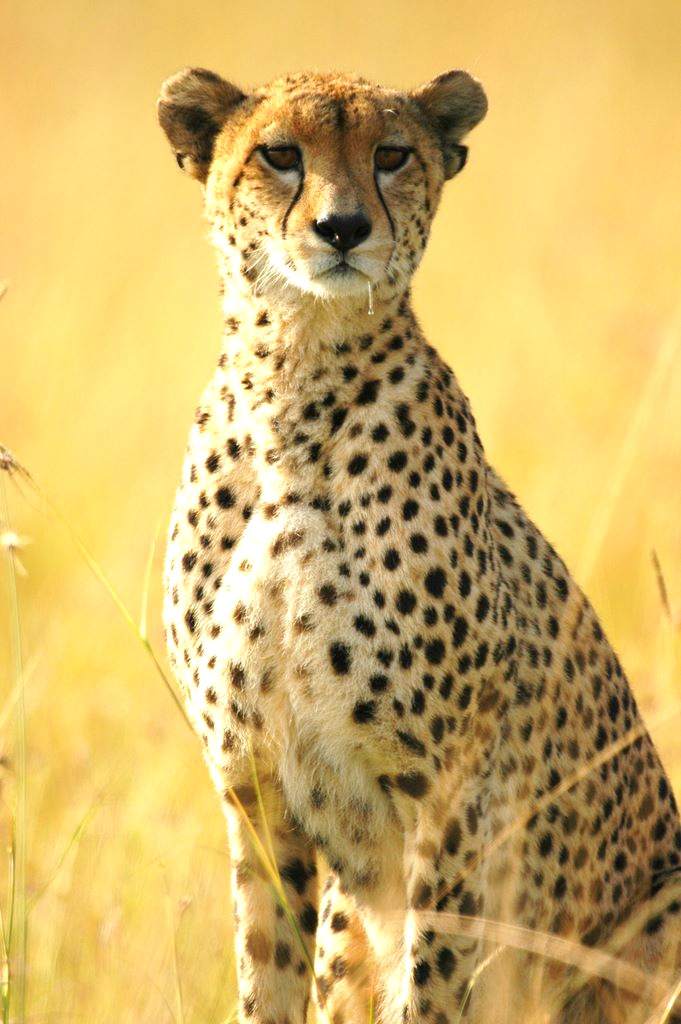31
Shot of the Month – March 2023
I love wild cats and I have had the good fortune of seeing lion, tiger, cheetah, serval, caracal, and the African wildcat in the wild. Of that group I am particulary partial to the leopard. Pound for pound they are perhaps the strongest of the group. Leopards are incredibly elusive and even a single sighting on a safari is a major victory. On our trip to Kenya in 2021 we had the amazing good fortune to have six leopard sightings!! I have only seen leopards in Africa but there are actualy 9 subspecies of leopard spread out across the world:
It is generally accepted that the African leopard is the most numerous species though there is no reliable estimate of their total population on the continent. India is home to roughly 12,000 leopards. Many of the other species of leopards are on the verge of extinction, however.
Individuals remaining:
Amur Leopard: 100
Javan Leopard: 250
Arabian Leopard: 200
Sri Lankan Leopard: 800
Persian Leopard: 800
Indochinese Leopard: 1000 to 2500
Leopards are stealth hunters and are renowned for their ability to carry prey up into trees to feed in peace. In the image above we found a leopard in the Masai Mara National Reserve with the remains of a Thompson’s Gazelle.
The uninitiated sometimes confuse the leopard with a cheetah. As you can see here however, the animals are quite different in size and build:
The leopard has shorter legs and a more muscular build. The cheetah (also photgraphed on the same trip) is built like a greyhound dog – long legs and a lean body. The spots on the cheetah are solid while the leopard has not spots, but rosettes. The cheetah is built to chase small prey across the open plain while the cheetah stalks in the bushes or may pounce from above while hiding in a tree.
A few more images from our trip:
A mother leopard playing with her cub just after sunrise
Another leopard with a Thomspon gazelle:
Kitty in a tree:
We found this female hunting along a riverbed just after sunrise
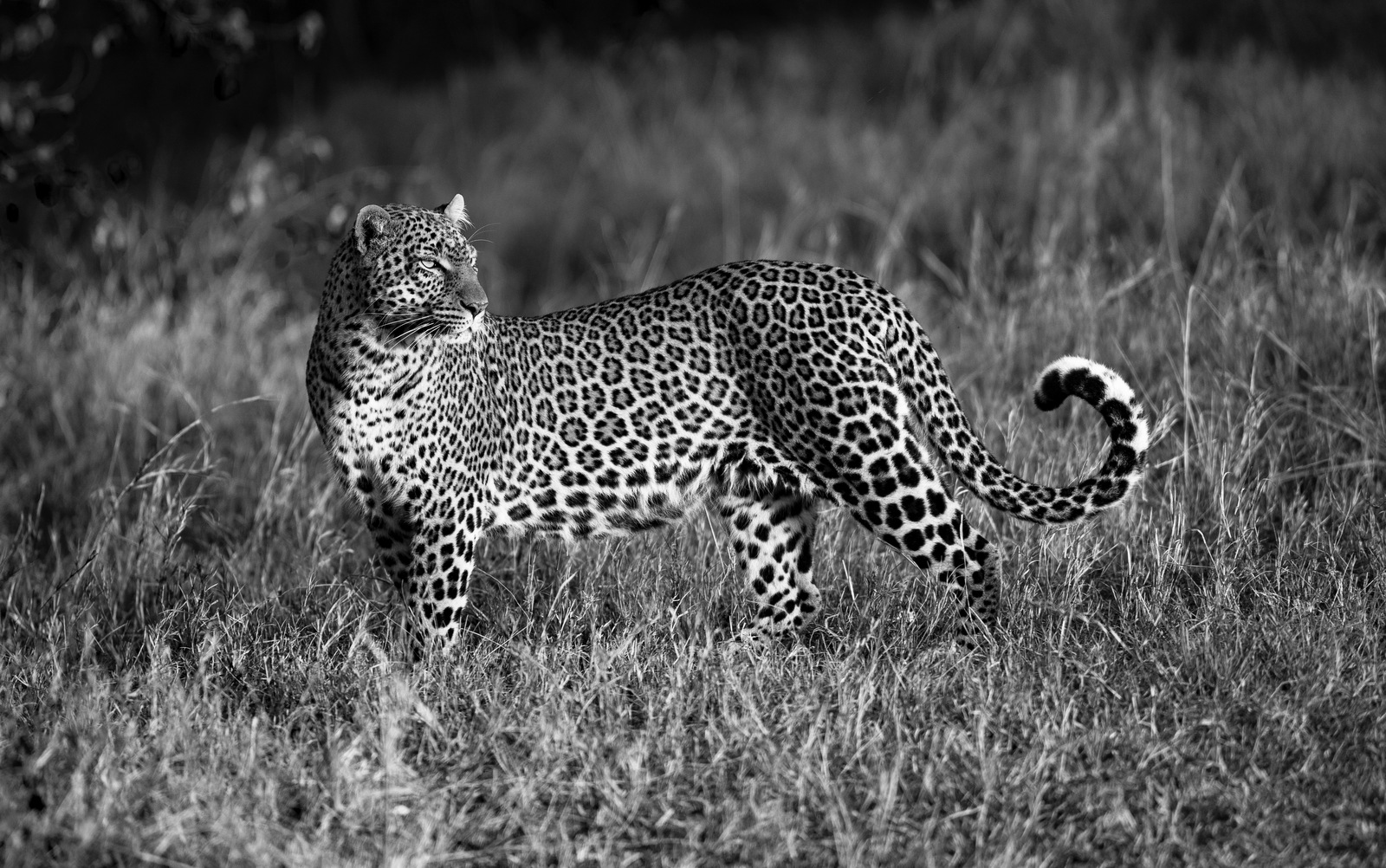
The color version:
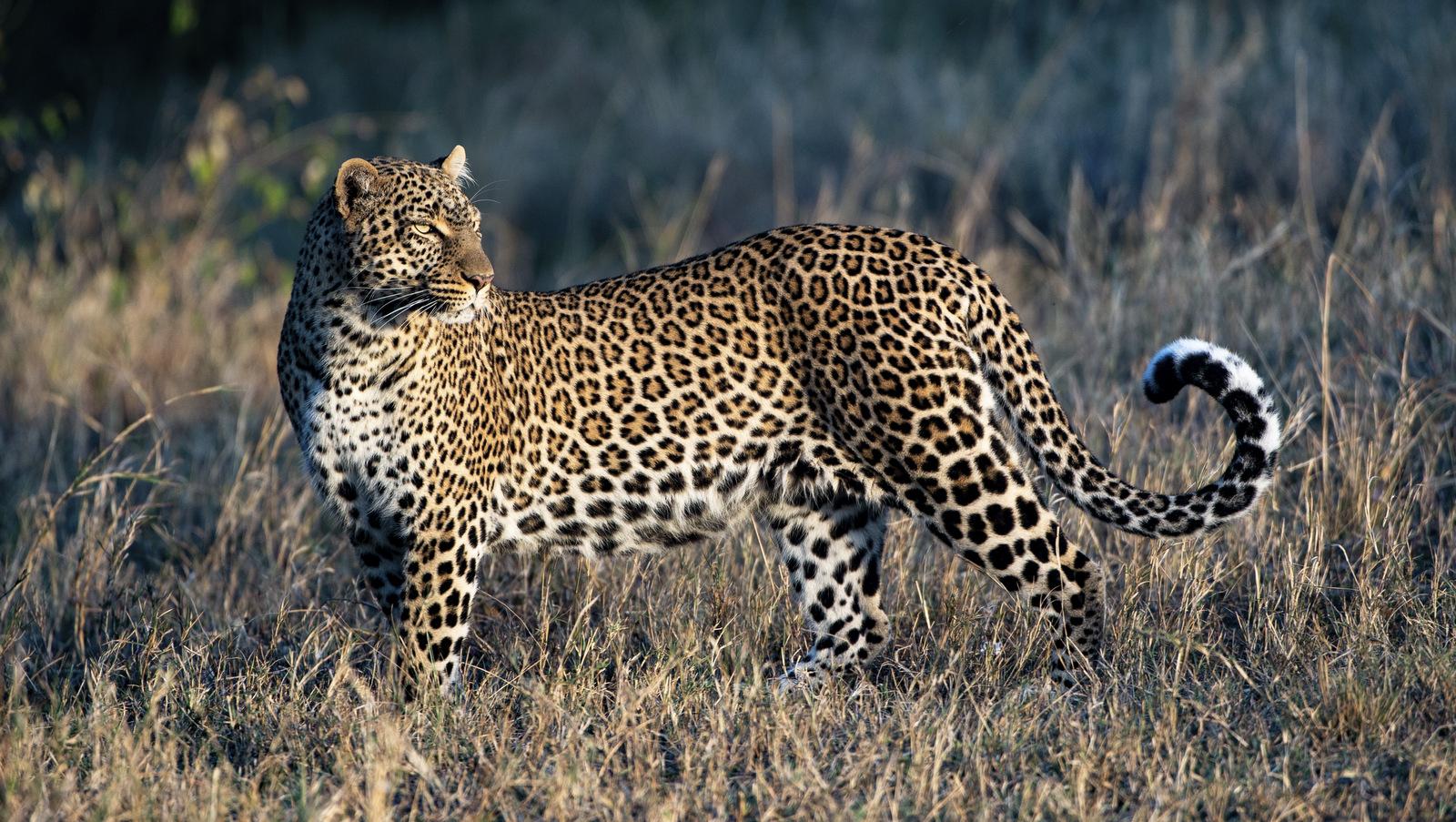
The stunning leopard – its elusive magic never fails to dazzle.
Until next month….m
Nikon D5, Nikon 600mm, f/4 1/500 sec, ISO 250, EV +1.33
30
Shot of the Month – June 2022
The natural world is filled with stunning beauty. I am certainly drawn to it and spend much of my free time trying to capture it with my camera. However, surviving in the wild is not for the faint of heart as life in the food chain is an endless battle between predator and prey. Many of us are attracted to the predator as we admire their cunning and specialized skills. Others root for the prey, especially if said prey is cute and cuddly.
In this post, I will share images where the predator was successful. This post will not be for everyone – if you are squeamish and don’t like to witness this harsh reality, I suggest you skip this month’s images.
In 2021 I went on a safari to Kenya that was focused specifically on the big cats. We would spend hours searching for lions, leopards, or cheetahs with hopes of witnessing those epic life-and-death struggles. The trip was so “successful” on that front that by the end we were quite traumatized by the amount of death we witnessed. We definitely experienced PTSD – Post Traumatic Safari Disorder. During a 10-day period, we saw a life-and-death struggle almost every day and sometimes several times a day.
Cheetah Mother and Cubs
We spent many hours over several days with this cheetah mother and her three cubs. The female was absolutely stunning looking and was by far the most impressive cheetah I have ever seen. Cheetahs are often timid and skittish. Not this female. She was powerfully built and walked with a confidence and swagger, unlike anything I have ever seen with a cheetah. Every day she had to find a meal for her growing cubs and we saw her hunt several times. In the image above mom caught a young impala but she did not kill it. Rather, she called her cubs over to have them learn/practice how to suffocate their prey. It was a tough scene to watch as the cubs didn’t know how to effectively apply the neck bite and the death was slow and drawn out. While it was a sad end for the impala, the cheetah mom had again provided essential food for her family and taught her cubs important life skills that they will need if they are going to survive on their own.
Piglets
One morning we drove to a location where we heard that two cheetahs had been spotted. As we approached we saw a couple of other vehicles sitting nearby. We had no idea where the cats were but we surmised that the cats must be sitting or lying in the tall grass in front of us. We stopped the vehicle and prepared ourselves for a long wait. But only five minutes later…
“Holy Crap!!” A warthog mom and her two piglets appeared out of nowhere and trotted down the path towards us not realizing the danger that lurked nearby.
After a brief stop, the warthog family continued down the road. The two cheetahs exploded from the grass. Mom warthog bolted straight ahead while the piglets ran in the opposite direction. The two cheetahs began chasing Mom but after a few yards, they stopped. The cats realized that the easier meal was behind them. The cheetahs changed direction and moments later each had caught a piglet.
In the blink of an eye, the mother warthog lost her entire family. In this image, we see the two cheetahs fighting over one of the piglets:
Young Topi and Young Lion
Near the end of a long day, we found a pride of lions stalking a herd of Topi that was about 100 yards in front of our vehicle, a bit off to the right.
While waiting I looked behind our vehicle and saw an adult Topi that seemed to be bleeding. I looked through the binoculars and saw blood on her rump. I said, “Hey look, that adult must have been attacked by a lion but managed to escape with those fresh wounds.” My partner took the binoculars and said, “No, she just gave birth, the newborn is lying just nearby. That blood is the afterbirth.” What a wonderful surprise.
Our joy was short-lived.
In the next moment, a young lion cub appeared and ran over and grabbed the newborn calf – most likely his first kill as a very young lion. The young calf’s “circle of life” was complete in just a few minutes and this emotional roller coaster left us reeling as we careened from joy to horror in seconds.
It was quite dark when I shot this image so the shutter speed was quite slow – the motion blur helps soften this Shakespearean tragedy – a bit. This was a particularly traumatic day – our day started with the warthog piglets and ended with the topi calf.
But the day had one last surprise. While watching the young lion run off with the topi calf we heard a commotion back out in front of our vehicle. We drove over and found that the stalking lion had just captured an adult topi.
A very tough day for the topi herd.
But don’t let these selected stories mislead you – we saw multiple other encounters where the prey won the day. Life is a struggle for all wildlife, predator and prey alike. In reality, the vast majority of predator hunts end in failure. Likewise, most young lions, leopards, and cheetah cubs never make it to adulthood.
I admire the beauty in both sides of the struggle. And I take solace that with each life lost, the “sacrifice” allows others to survive and keep the ecosystem in balance.
Ok, I promise, next month, definitely something cute and cuddly…
Cheetah Mom with Cubs (Nikon D4S, Nikon 200-400mm, f/5, 1/4000s, ISO 720
23
Time to look back at 2021 with a collection of images that summarize my year of photography. This year I will post them in chronological order. (Click on an image to see it larger)
1. In January I had been tracking the weather forecasts for the Painted Hills in Oregon and when I saw a chance of snow I hopped in the car and drove 7 hours to reach the site. Alas, no snow to highlight these colorful peaks but the clouds and dark sky really helped make the photo. I drove back the next night (this location is best shot at sunset) through treacherous fog, and snow – sometimes going 10 miles/hour or less for long periods of time on winding mountain roads. Ugh — brutal but at least I was rewarded with a nice image for my efforts.
2. In May I escaped to San Juan Island in Washington State for a week to photograph foxes. Here we see a lovely female red fox (Silver Morph) with one of her pups.
3. Each year from mid-May to early July bald eagles congregate at Hood Canal in Washington to feast on spawning midshipman fish. I made a few visits and captured this mid-air discussion
4. In June I made another trip to San Juan Island for some kayaking and while there I got this nice image of the Lime Kiln Lighthouse.
5. Also in June I shot this beauty outside of our kitchen window! (Male Anna’s Hummingbird)
For the next 3 images I had to go a bit futher afield. We spent a glorious 10 days at the Masai Mara Game Reserve in Kenya in September. I had lived in Kenya many years ago and it had been 15 years since I had visited Masai Mara. There is still no place like it on the planet to see big cats.
6. I love this unique photo – we had 12 giraffe walk past us at sunset. They got all bunched up as a family of cheetahs was sitting nearby and the giraffes were watching them closely. In this image the sun had fallen below the horizon and we were left with just shades of blue.
7. We spent alot of time with this mother cheetah during our trip. She was one of the most powerful cheetahs I have ever seen and exuded confidence. In this image she is waiting out a heavy rainstorm.
8. We had tremendous luck in spotting leopards on our trip — during our stay we found 3 females with a cub (so that is 6 leopards in total). In this image we see a mother leopard playing with her cub just after sunrise.
The last two images are from the Grand Teton National Park – I spent 10 days there in December.
9. In this image I slowed down the shutter speed to highlight the falling snow and give a sense of the conditions that moose endure during the winter here.
10. In this image a unique view of moose with some beautiful side light.
Let me know your favorite in the comments below.
Hope you have a wonderful 2022!
michael
30
Shot of the Month – September 2021
Is this image Art? And if it is, does that make me an “Arrrteeest”?
Photography was invented in 1826 (almost 200 years ago) and since that time the “Is photography art?” debate has raged on. This may surprise you given that photography is generally accepted today as Art, but this is a fairly recent phenomenon. How recent? Most museums only began to collect and display photographs in the late 1970s and early 1980s. Did you know that there are seven traditional forms of art?
Me neither. Photography is not among that list (scroll to the end to see the original seven).
So what is art? The Cambridge Dictionary says:
the making or doing of something whose purpose is to bring pleasure to people through their enjoyment of what is beautiful and interesting, or things often made for this purpose, such as paintings, drawings, or sculptures
I do strive to bring people pleasure with my images so perhaps I am trying to be an artist. Painting and sculpture use essential elements and principles such as line, shape, form, texture, balance, asymmetric balance, color, size, depth, light, positive space, and negative space.
Hmmn, interesting. I also consider many of these elements when I raise the camera to my eye. In fact, on an outing I may spend hours waiting to get the right mix of these elements in place before taking a single image.
As a photographer I spend much of my time trying to showcase the work of the world’s greatest artist – Mother Nature. Each day she throws together a fabulous mix of flora and fauna draped in captivating colors and hues. Every day, across the planet she is producing one masterpiece after another.
If I do my job correctly and get all the technical stuff right — set the right aperture, dial in the shutter speed, and compose the image well then Mother Nature will do the rest and we get some beautiful images that hint at the wonders of the natural world.
The Merriam Webster dictionary defines art as:
the conscious use of skill and creative imagination especially in the production of aesthetic objects.
I can say that I am a better photographer than I was 30 years ago – even this old dog has acquired a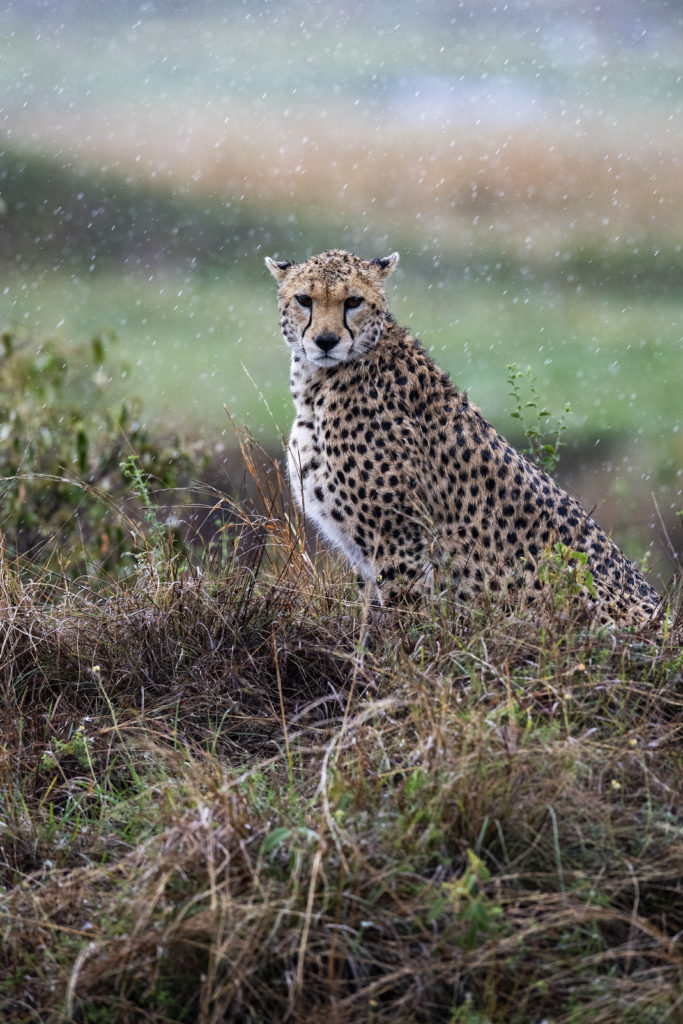 certain level of skill and creative vision to help capture Mother Nature at her best.
certain level of skill and creative vision to help capture Mother Nature at her best.
And some days I use a bit of “creative imagination” to manipulate an image to form something beyond what I witnessed. As in the photo above, converting it to black and white transforms a “mere” pretty picture of a cheetah into a portal that connects the viewer with feelings and mood a bit more universal.
In the color version we have a shared viewing experience as we all gaze outward at the beautiful scene. The B&W version may offer a more individual, internal journey and reaction that can have very little to do with a cheetah sitting in a driving rainstorm, on a continent far, far away.
The realistic color version connects us to nature, while the B&W version connects us to ourselves – perhaps reminding us of the storms that we weathered in our lives and how we persevered.
Wow, if I keep rambling like that I will have to get a turtleneck sweater, beret, and start smoking little French cigarettes.
Seems all a bit highfalutin for this small town boy (Art, Schmart). All I can say is, if you find joy, or a shared sense of awe, or brief respite from a troubled day with one of my photos, whether it be Art or something else, then I consider my time well spent.
Until next month….michael
Were you able to remember/guess the original, traditional forms of art? They are:
- Painting
- Sculpture
- Literature
- Architecture
- Cinema
- Music
- Theater
Sources
Is Photography Art? – Both sides of the debate explained.
What are the 7 different forms of Art?
A Brief History of Photography and the Camera
Nikon D5, Nikon 600mm f/4 (@f/5.6), 1/1000 sec, ISO 2500
15
Shot of the Month – February 2010
Ok, you guessed it, this month we are going to talk about cheetahs. This is a glamour shot of a healthy cheetah that I found on the plains of Kenya, Africa. The allure is a bit dampened by that bit of drool, uh, just there, yeah, there on the right. At the time of this shot the cheetah and I were surrounded by thousands of zebra –perhaps this fellow was contemplating the dining bonanza before us.
Attacking an adult zebra is a daydream at best. Adult zebra can weigh from 450 to 1,000 lbs – far outside the weight class of our speedy cat. A full-grown cheetah weighs from 80 to 140 lbs and focuses on smaller prey that usually weighs less than 90 lbs often preferring Thomson’s Gazelle, Grant’s Gazelle, springbok, or the Impala. On a good day, a cheetah might go after a baby zebra or wildebeest.
No creature in the world can run as fast – cheetahs can reach speeds of 75 mph in 3 seconds flat and can cover 24 feet in a single stride. That means a cheetah can accelerate faster than any Ferrari, Porsche, or Lamborghini made today.
Virtually every aspect of the cheetah’s body has been transformed to maximize speed. They have a slender, long-legged torso very similar to that of a greyhound dog. They have semi-retractable claws – claws that cannot be fully withdrawn. The claws are therefore always in contact with the ground ensuring excellent traction acting much like a good set of track cleats. Cheetahs have large nostrils to improve oxygen intake and they have an enlarged heart, liver, and lungs to efficiently circulate oxygen throughout the body. They have small heads to lower wind resistance. An unusually flexible spine acts like a giant spring that can produce explosive surges of speed and long strides. Black “tear marks” that run from the inside corner of each eye down the side of the nose help reduce glare from the sun and improve vision (think football players with black makeup on their cheeks). Finally, cheetahs have especially long tails which act like rudders that enable them to make exceptionally sharp turns and outflank fleeing prey.
Basically, a cheetah is a supercar on paws. But so many words…. as they say, a picture is worth a thousand of ‘em…
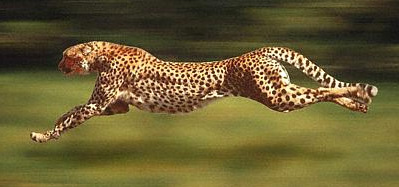 (Source)
(Source)
Now. That’s. Fast.
Until next month…:-)

